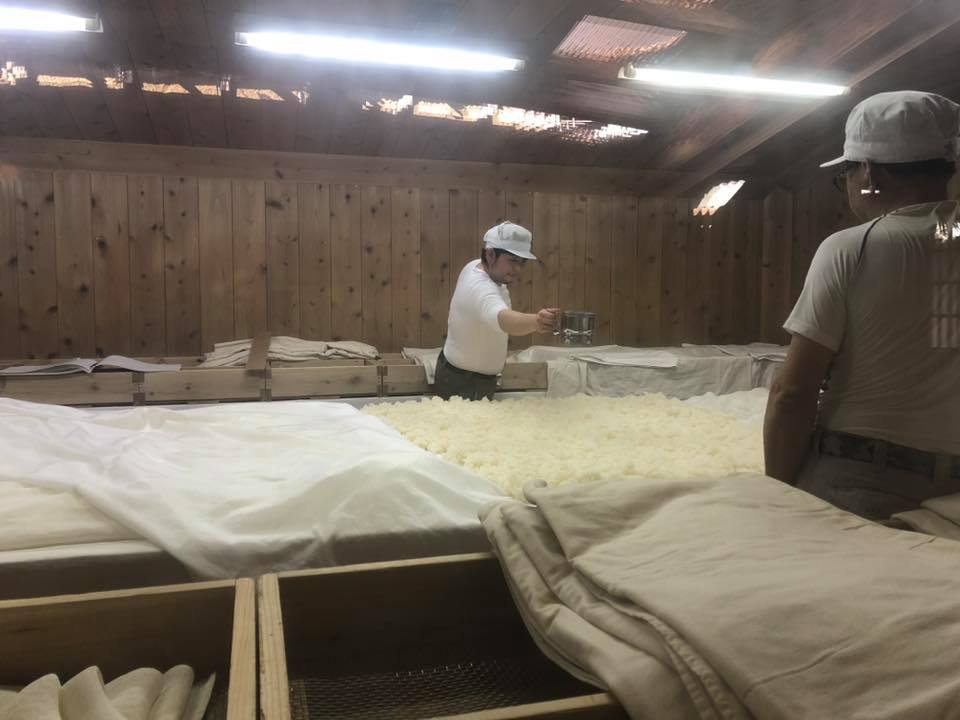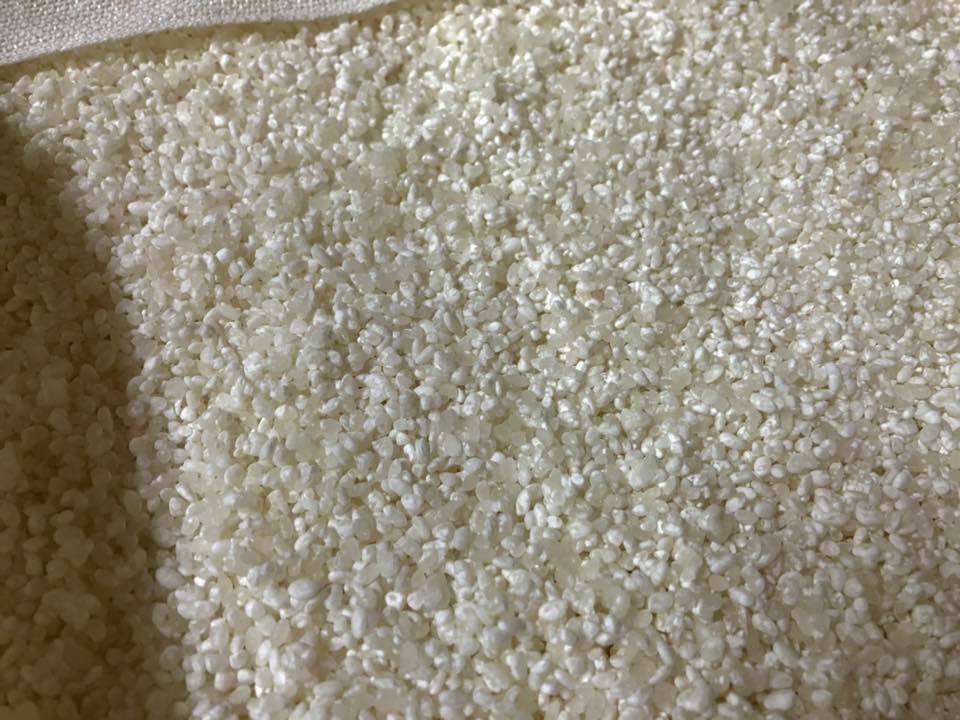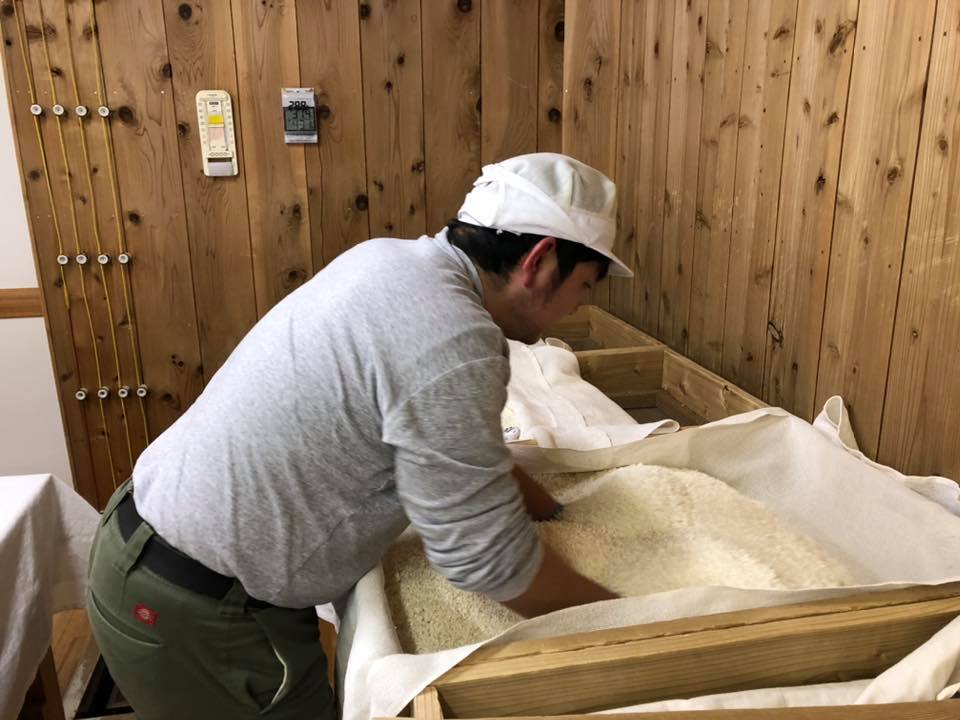☆S.tokyoで使う米麹を造りました☆
蒸しあがった蒸米を麹室(こうじむろ)と呼ばれる麹造り専用の部屋に入れました。
麹菌が増殖するために適した温度と湿度になっており、人にとっては蒸し暑い空間です💦
酒造りにおいて、麹菌の酵素は不可欠!
酵母はブドウ糖をアルコールと二酸化炭素に分解します。
ワインは最初から果汁にブドウ糖が含まれているのでそのまま発酵できますが、日本酒の材料であるお米には、デンプンが主です。
なので、デンプンをブドウ糖に分解させる必要があります。
そのために、麹菌の「酵素」が必要なのです!
さて、この蒸米に麹菌を種付けしていきます✨
蒸米の表面に、麹菌の胞子がくっつきます。
米の内部の水分を求めて、蒸米の中へ中へと入り込んで増殖していきます!
中へ中へと入り込むことで、約40日の発酵工程の中で少しずつ米が溶けて、少しずつ麹菌の酵素を供給することができます😊
写真のコメント欄もご覧ください✨

熱々の蒸米を、外気で冷やし、麹室に入れました。広げて

麹菌を種付けします。必要なのは、麹菌の種。胞子です。
胞子だけを均一に、振りかけていきます。
軽いので、むやみに空気を動かさないようにゆっくり。作業しない人は静止です!

24時間もすると、少しずつ蒸米の表面に麹菌が繁殖して

温度が下がらないように、酸素をいれてあげます。優しく優しく😊
☆ We made koji used in S.tokyo ☆
Steamed rice was put into a koji making room called “麹室(koji muro)”.
The temperature and humidity are suitable for Koji mold to proliferate, making it a humid space for people.
In sake brewing, koji mold’s enzymes are indispensable!
Yeast breaks down glucose into alcohol and carbon dioxide.
Wine can be fermented as it contains glucose in the juice from the start, but starch is the main ingredient in rice, which is the material used for sake.
So you need to break down the starch into glucose.
For that, we need koji mold’s “enzymes”!
Now, we will seed this steamed rice with koji mold.
Aspergillus spores adhere to the surface of steamed rice.
In search of the moisture inside the rice, it penetrates into the steamed rice and proliferates!
By penetrating into the inside, the rice gradually dissolves in the fermentation process of about 40 days and the enzyme of koji mold can be supplied little by little.